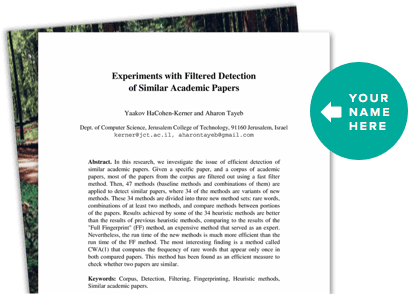About This Project
BLIND, a prairie dog observation structure located in Ogallala, Nebraska, overlooks a Black-Tailed Prairie Dog colony cohabited by rattlesnakes and burrowing owls. A keystone species, prairie dogs support 42 species but have experienced a human-caused 99% population decrease. With recording equipment, BLIND will broadcast prairie dog vocalizations to visitors. Data collected will promote conservation efforts to visitors and inform interspecies design-a multiperspective design approach.
Ask the Scientists
Join The DiscussionWhat is the context of this research?
The decline in prairie dog populations can be attributed to a lack of understanding among humans about the vital role these species play in their ecosystem. We can consider a shift in human perspectives through engagement to prevent further depletion of prairie dog populations by studying communication between species, which can foster cross-species empathy.
Research suggests that incorporating interspecies design is valuable in mitigating biodiversity loss and moving away from human-centric practices currently dominating the design field. This shift toward a more inclusive model is essential to transition from mere observation to creating a space that facilitates design and conservation, benefiting prairie dogs and their ecosystem.
What is the significance of this project?
Prairie dogs, recognized as keystone species,are vital to their ecosystem and the consequences of declining populations impact the many species they support, as smaller colonies hinder access to essential resources.In Ogallala, scientists have documented notable adverse effects on other species, including the Prairie Rattlesnake.
Human and AI data may offer valuable insights into conservation and interspecies design methods. This work benefits Black-Tailed Prairie Dogs and the 42 species dependent on them. Furthermore, the BLIND initiative aims to give the public a unique opportunity to engage directly. It seeks to significantly challenge and counter prevailing negative perceptions of prairie dogs to contribute to ongoing conservation and interspecies design endeavors.
What are the goals of the project?
Our project has two primary goals: enhancing prairie dog conservation and promoting interspecies coexistence. We anticipate that a study of prairie dogs and human communication will yield measurable improvements in their specific colony ecosystem and future design. This includes evaluating BLIND's effectiveness as a research tool and enhancing public awareness of prairie dogs. To achieve these objectives, we will equip BLIND with audio recording equipment to broadcast prairie dog vocalizations to visitors. Post-visit surveys will gather visitor feedback. Over a year, we will assess the colony's well-being, analyze survey results, and document BLIND's performance. These goals collectively aim to advance prairie dog conservation and foster better interactions between species.
Budget
Funding will provide audio equipment to capture and broadcast prairie dog vocalizations into the BLIND, allowing researchers and the public to experience and analyze interspecies communication using AI. The audio capture system will collect vocal inputs using parabolic microphones directed toward the prairie dog colony. Those inputs will be collected and stored by a Raspberry Pi computer for future analysis by researchers. The laptop additionally connects to the internet through a cellular modem, allowing audio to be broadcast to speakers and experienced by visitors to the site. We will also analyze human engagement and attitudes before and after the experience towards prairie dogs. Funding will move the site beyond observation to one fostering interspecies communication, where humans can shape interspecies design and understand a vulnerable species in hopes of future conservation. This proof of concept will serve to prepare for more significant grant funding.
Endorsed by
 Project Timeline
Project Timeline
BLIND will complete construction by January 2024. Recording equipment installation will occur by March 2024. Existing colony conditions will be recorded at this time. The prototype will open to the public in May 2024, and visitors will analyze prairie dog communications and respond to surveys. After the study, we will assess its effects on colony conditions, noting opportunities for improved interspecies design. Dates may vary due to unpredictable Nebraska weather.
Nov 06, 2023
Project Launched
Dec 01, 2023
Purchase all Equipment
Jan 01, 2024
Complete Construction of BLIND
Mar 01, 2024
Develop Survey Questions and Record Existing Colony Conditions
Mar 01, 2024
Install Recording Equipment on BLIND
Meet the Team
Affiliates
Affiliates
Affiliates
Affiliates
Affiliates
Affiliates
Team Bio
We are an interdisciplinary team of researchers passionate about exploring the intersections of AI, interspecies communication, public engagement, multispecies design, and architecture. Our collective expertise spans computer science, engineering, biology, sociology, emerging media art, and architecture. Our mission is to push the boundaries of traditional human-centric thinking and leverage these innovative fields to drive advancements in biological conservation.
Ash Eliza Smith
Ash Eliza Smith uses storytelling, worldbuilding, and speculative design to shape new realities. Smith works across art and science, between fact and fiction, and with human and non-human agents, including animals, plants, and machines to re-imagine past and future technologies, systems, and rural-urban ecologies. Smith incorporates liveness, play, and participatory co-design strategies to create interactive stories, films, mixed reality theater, live-action role-plays (LARPs), and prototypes of the future that may solve or re-frame problems.
Ash is an Assistant Professor at the Johnny Carson Center for Emerging Media Arts. She received her MFA from the Visual Arts program at UCSD, where she worked as an affiliate of the UCSD Design Lab and associate director of the Culture, Art, and Technology department. Previously, she attended the Performance Studies program at New York University’s Tisch School of the Arts and the University of North Carolina at Chapel Hill. Smith has presented work at the Museum of Contemporary Art San Diego (MCASD), the International Symposium on Electronic Art (ISEA), Qualcomm Institute (Gallery QI), and the Without Walls Festival. Smith has worked as a producer, director, and writer for various media groups and publications such as Vice, Motherboard, and The Creator’s Project and produced work in collaboration with Creative Time and MoMA in NYC.
Jason Griffiths
Griffiths directs the PLAIN Design-Build architectural collective that offers experienced-based architectural education in the master of Architecture Program at UNL.
Jason has coordinated the design, construction and installation of BLIND beginning in 2021. The project combines innovative forms of timber construction and focuses on the use of regionally harvested timber. Funded by grants from USDA, NFS and Timberlyne, the project will provide a low-carbon solution based on whole tree usage.
PLAIN promotes all types of timber construction, ranging from advanced forms of engineered lumber to small-scale forestry and local fabrication. Renewable resources include undesirable trees discarded by insect borer infestations or the by-product of forest fire fuel mitigation. PLAIN's projects support material flows that sequester carbon and reduce the embodied energy of construction. PLAIN's buildings establish circular economies by learning from vernacular forms of architecture and regional forestry ecosystems. PLAIN empowers students through a co-creative educational model of experienced-based learning and hands-on construction.
John Strope
I'm a dynamic Systems Engineer focusing on product development and entertainment-related projects. Spanning multiple industries, I’m most skilled in project management, designing and implementing control systems, and developing products from R&D through DFM/DFA.
This work has brought me around the world, working in eleven countries across amusement parks, industrial centers, TV programs, and much more. I've picked up helpful technical skills along the way, becoming proficient in multiple CAD suites, computational analysis, Python/C++, PLC systems, and more. This experience helps inform my passion for teaching - regularly leading volunteer workshops and encouraging students’ passion for design through the magic of entertainment + technology.
An alumni of the University of Nebraska, I’m at my best when working in diverse environments, bringing new concepts to life, from award-winning attractions to freelance animatronic work. When not onsite, I'm most often at a baseball game, concert hall, or home workshop.
Elizabeth Nielsen
Elizabeth Nielsen is a Master's of Architecture student at UNL who is currently enrolled in the PLAIN Design-Build design-research studio.
Travis Ray
Travis Ray is the embedded systems program coordinator at Nebraska Innovation Studio. He assists local businesses, academics, and entrepreneurs in designing, developing, and testing prototypes. Ray has a background in education and is currently a graduate student in the College of Education and Human Sciences. He has taught and developed curriculum for secondary and post-secondary academic institutions.
Julia McQuillan
I was part of a team that created the two-wave National Survey of Fertility Barriers public use data set for studying fertility and infertility. Analyzing this data helped answer questions about psychosocial dimensions of fertility and infertility – including health disparities. Now we study fertility-related questions using the German longitudinal Pairfam dataset.
I combine my interests in social inequality and health to work on informal science education as a vehicle for engaging youth with science and meaningful careers. Our team conducted a four-wave Science Identity Study on middle-school youth. In addition to publications from this project, I was honored that the TEDxYouthLincoln team invited me to give a talk (“How do we find science kinds of people?”) at the 2017 youth event.
I lead a National Institutes of Health funded Science Education Partnership Award, Worlds of Connections, that engages youth with network science for health research. Through collaborations with UNL Undergraduates and the UNO NE STEM 4U team, we published informal activities for youth to explore network science for health. Our team also invited artists to create pro-vaccination posters that are available for free on the worlds of connections web page and the book "Vaccinate". Through Collaborations with colleagues in the Johnny Carson School of Emerging Media Arts at the University of Nebraska, we are creating an immersive Virtual Reality Experience for people to explore connections between animals, plants, and humans from a One Health/Network Science perspective.
In the 2021 “Nebraska Lecture” I make the case for why sociologists are valuable for any team seeking to tackle “Grand Challenges”.
Dennis Ferraro
Dennis Ferraro is the resident herpetologist and a professor of Conservation Biology at University of Nebraska’s School of Natural Resources. He has been a UNL faculty member since 1990.
Ferraro typically drives 5,000 miles each year, checking on the communities and populations of various species across the state. Specifically, he has collected data on more than 3,700 snakes, 3,400 amphibians and 410 turtles and lizards since 1990. He does radio tracking and telemetry in reptiles, and surgically implants transmitters in snakes. He shares the data he gathers with the Nebraska State Museum, the Game and Parks Commission, and other agencies that need it.
Besides health benefits, working with our native fauna can be an economic boost. Prairie dogs, humble though they may be, are a keystone species, creating ecosystems where other species thrive, including rattlesnakes, burrowing owls, salamanders and beetles. And, Ferraro adds there is no research to back the popular notion that cows and horses break legs in prairie dog holes.
He sees rattlesnake-oriented ecotourism possibilities for western Nebraska. After a presentation at a national conference, Ferraro received email requests for tours of prairie dog towns. Ferraro also used his knowledge of rattlesnakes' habits and defenses to help park officials at Scottsbluff National Monument in western Nebraska create boardwalks and tunnels that allowed park visitors and rattlesnakes to coexist safely.
As the head of the curriculum committee for Nebraska's Master Naturalist program, Ferraro is hoping to inspire outdoor outfitters and bed and breakfast owners to turn prairie dog villages into destinations of choice.
Ferraro's many projects in the works are his ongoing goals: to promote the conservation of Nebraska's amphibians and reptiles to the public and to instill appreciation of and stewardship for natural resources in students and youth.
Lab Notes
Nothing posted yet.
Additional Information
Additionally, we have provided links to a diagram explaining the social groups of prairie dogs and where those are located on site in relationship to the BLIND and a diagram explaining the placement of the audio recording system's parabolic microphones on the building's exterior.
Project Backers
- 4Backers
- 78%Funded
- $3,065Total Donations
- $766.25Average Donation

